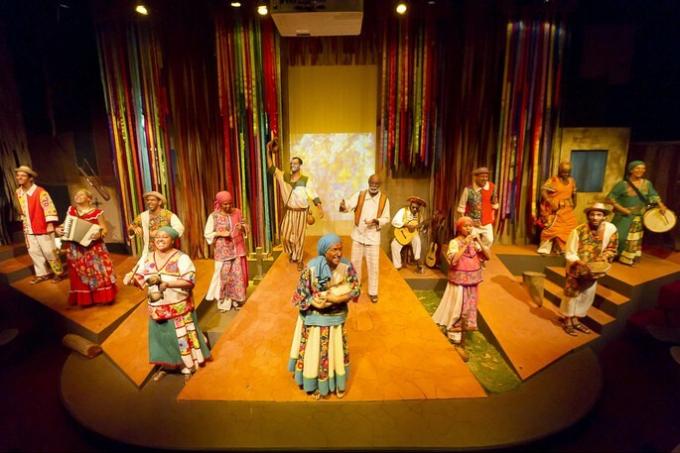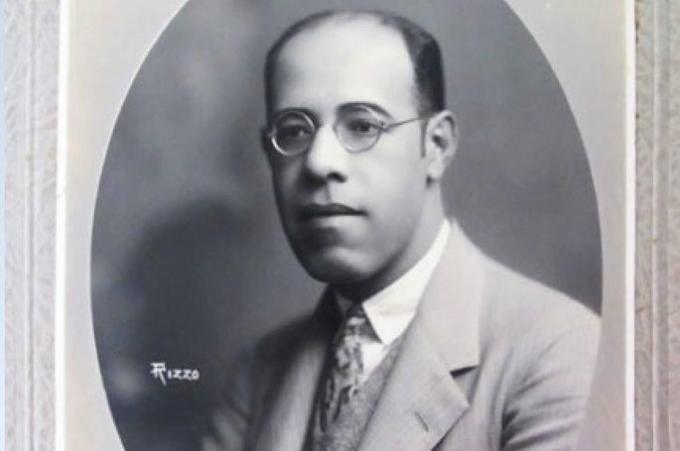The history of theater began in Ancient Greece, around the VI century; Ç.
At that time, rituals were performed in praise of the mythological god Dionysus, deity related to fertility, wine and entertainment.
Thus, the theater appears in this context and as a result of these parties.
The theater in prehistory
Although it is a consensus that Western theater originated in Ancient Greece, it is important to emphasize that this manifestation was already present in humanity since remote times, even if in a rudimentary.
In prehistory, human beings had different ways of communicating, and imitation was one of them.
Most likely, cavemen developed gestures that resembled animals. In addition, they staged hunts to tell their peers how the situations occurred.
As well as dance, music and drawing, theatrical language also had its importance in prehistoric times.
Theater in Ancient Greece
Celebrations to the God Dionysus lasted for several days and took place at harvest time, as a way of giving thanks for the food and wine.
Citizen participation was intense and there was a kind of procession, which was called "dithyramb". Then came the "choir", a group of people who sang and danced in honor of Dionísio.
until it appears Thespis, a figure of great importance for the emergence of Western theater. It is said that this man participated in one of these rituals when, at a certain point, he decided to wear a mask and say that he was the god Dionysius himself, thus initiating a dialogue with the "choir".
The boldness of such an attitude made Thespis recognized as the "creator of the theater" and the first actor and theatrical producer.
Later, this artistic language evolved and strongly influenced the Roman theater and other cultures.
From an architectural point of view, the structure of the first theaters was similar. The presentations were made outdoors, in semicircular constructions.
There was a space for representations, called orchestra. The place to accommodate the audience was the bleachers, built on mountainous slopes, which facilitated the acoustics.
already the stage it was the place where the actors prepared for the presentation and kept the costumes and scenographic objects.

To complement your studies, read: Greek Theater.
Theater in Ancient Rome
The Roman theater was greatly influenced by the Greek theater, as well as other cultural manifestations of that people. Etruscan culture was also a relevant factor in the development of Roman theater art.
However, the Romans brought some modifications to this language. The most significant of these concerns the architectural structure, which was previously built on hillsides by the Greeks and later incorporated arches and vaults by the Romans.
The themes and goals of Roman theater have also changed somewhat, with the emphasis on more entertainment (such as gladiator and animal fights) and less religious matters.
The Medieval Theater
After the Roman Empire declined, the Middle Ages began, comprising the 5th to 15th centuries.
In medieval times, for many years, theatrical language was banned in Europe. This is because it was considered by the Catholic Church as a sinful activity, only reappearing in the 12th century.
Thus, the purpose of medieval theater was the dissemination of religious precepts and biblical stories, being staged by members of the clergy.
To go deeper, read: Medieval Theater.
Emergence of theater in Brazil
In Brazil, the origin of the theater is related to the arrival of the Jesuits in the 16th century and their commitment to catechize the population, both Indians and settlers.
Thus, the priests used this expression to transmit the teachings of the Catholic Church.
One of the most notable people in this context was Father Anchieta, who strongly dedicated himself to the call catechism theater.
Read more about it: History of theater in Brazil
The theater today
Nowadays, this way of artistic expression has characteristics quite different from those that defined it in the beginning.

The demonstration evolved throughout history, starting to be presented also in closed places, which ended up restricting and elitizing its audience.
The forms of acting have changed and the purpose of the shows has also changed, and it is possible to find several theatrical aspects nowadays.
Curiosity
Theater is a word that comes from the Greek term theater. Its meaning is related to a set of theatrical performances and the place where these performances take place.
To learn more about related topics, read:
- Renaissance Theater
- Realistic Theater
- Performing arts: definition, genres and artist training
Bibliographic references
History of Art, by Graça Proença. Attica Publisher


